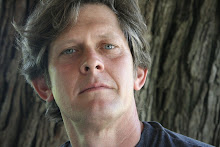
Is it possible to go an entire day without driving your car and go about "business as usual"?
I am happy to report that Tuesday, Earth Day, the answer for me was yes.
A dozen blocks on foot began the day - breakfast with Ed at IHOP. Ed is a long-time friend and running buddy, an Episcopal priest (who single-handedly revived my faith in his profession) and "ombudsman" extraordinaire. You should hear his sermons. Very inspirational, full of insight and love and woven with razor-sharp wit. I call it "stand-up homily."
Took care of an errand along the way.
After a hearty breakfast, and several hearty laughs, we carpooled downtown and took care of a few "necessaries". Employing some cerebral strategic planning (ok, we were really just driving and yacking) we breezed through our to-do lists in one car, not two.
Ed dropped me off at my place and I rode my bike for the rest of the day. It helps that I live only a couple of miles from my office.
So there you go; I did it.
It wasn't easy. The walking infrastructure has deteriorated over the past two generations as sprawl-centered development ignored anything but the car. And there are no bike lanes, so urban jungle rules apply. A rails-to-trails project will soon link the university with downtown with a walking/biking trail and that is a very positive initiative.
But it is possible.
What if every other day, we leave our cars at home. The result: half the cars on the road. Faster commutes, fewer traffic jams, less stress.
I understand that these options are not open to everyone. Some live in the county, and there, the car is really the only way to get from here to there. I live in a city, so I have options. Even though there are few sidewalks and no bike lanes, you can get around without a car. Sure the bus line could have longer hours, and could run more frequently, but with some personal planning, that's an option as well.
The more people insist on alternative modes of transportation, the easier it is for politicians and community leaders to move forward and initiate policies to fill in the gaps.
If we all look for options and engage in our community's effort to expand and enhance transportation alternatives, we can move in the direction of more livable, more humane existence and reverse the destructive trend of sprawl.
What can you do?





No comments:
Post a Comment